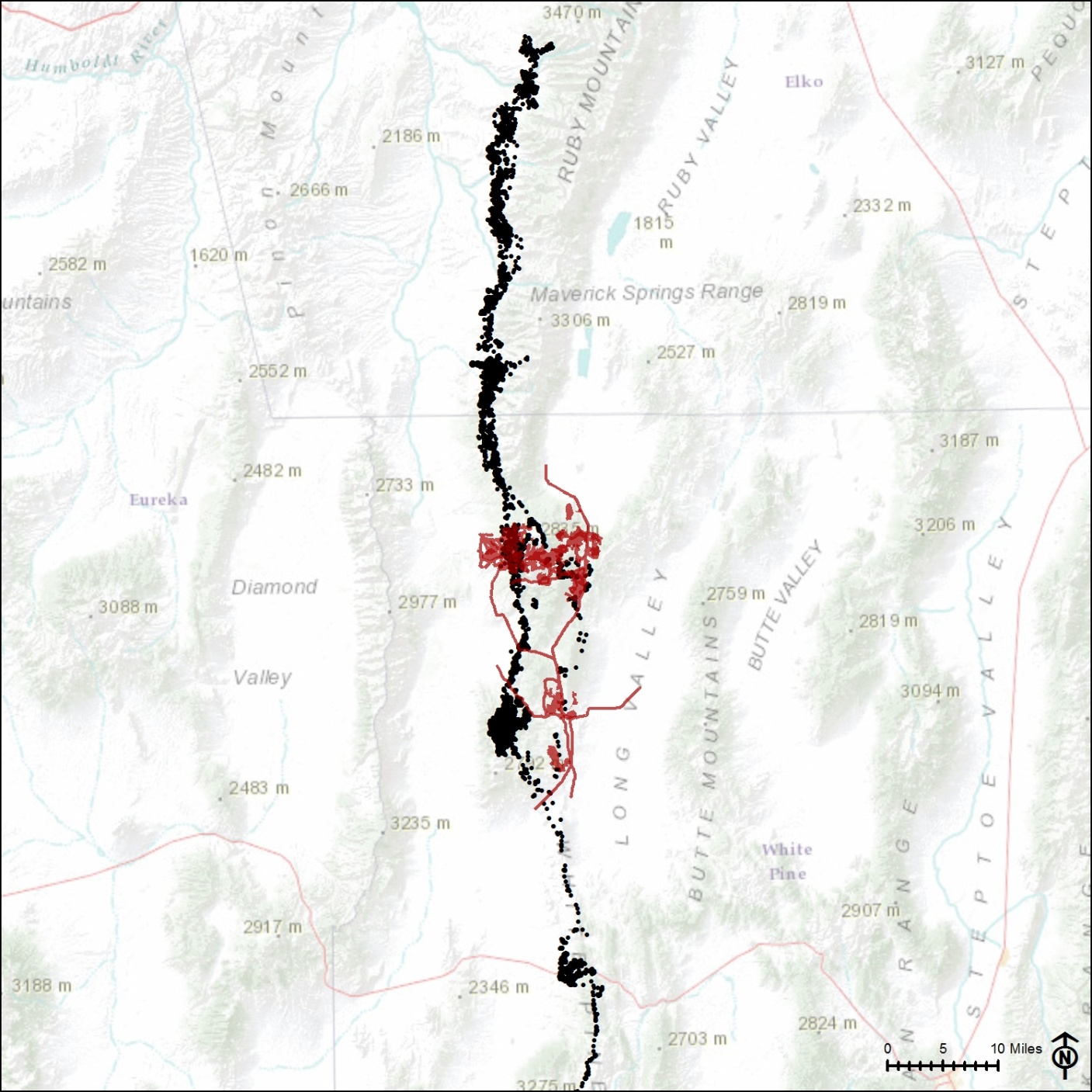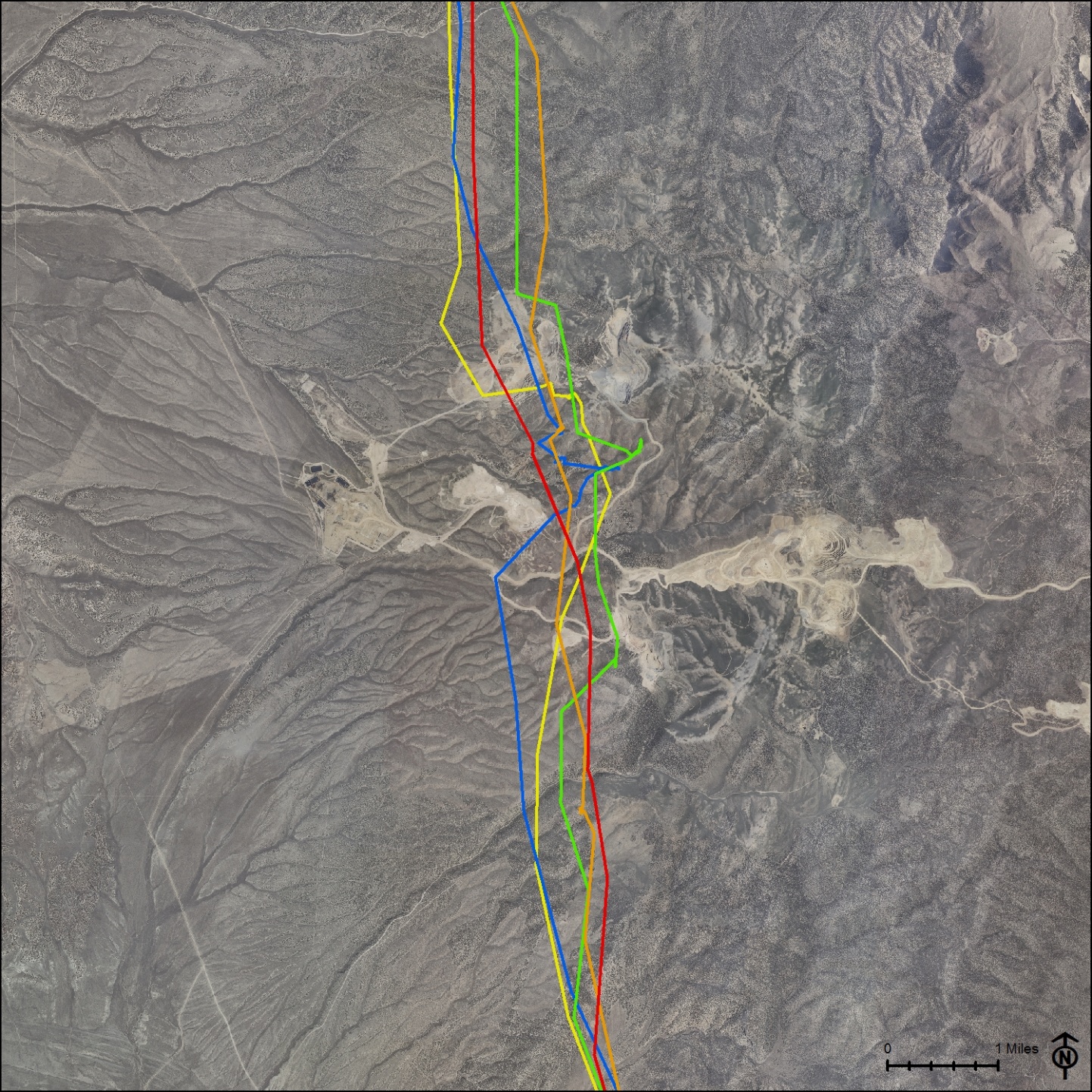Mule deer researchers in Nevada are utilizing ATS’ G2110E Iridium/GPS Location Collar to learn more about mule deer migratory corridors and migration behavior. Currently, over 150 Iridium collars are deployed in Nevada, with more recently deployed in winter 2012-13.
Researchers there are able to collect fixes as frequently as one every 15 minutes, or as few as one per day. The variable programmability of ATS' Iridium collars has allowed researchers to increase fix intensity during peak migration periods, and decrease fix intensity during times mule deer remain largely sedentary on winter and summer ranges.
The collar's flexibility of programming, and remote programmability via e-mail command, have allowed researchers to learn several things about their mule deer including: summer range, winter range, migration corridors, migration timing, migration triggers, migratory behavior, foraging areas, and fawning areas. A couple of the migration corridors in Nevada have been demonstrated to be over 120 miles long, as shown in the image bottom left.
Another question currently being addressed with the Iridium collars is “how do mule deer respond to novel disturbance along their migration corridor?” Hourly fix intervals have allowed researchers a better understanding of the potential energetic cost associated with navigating novel disturbance that bisect their migration corridors. The image at bottom right shows how five deer moving through a disturbed area moved differently before and after the disturbance than they did while moving through the disturbance. This type of information is essential to understanding the potential impacts of migratory corridor disruption.
This application is just one way ATS' Iridium collars can benefit wildlife research. To learn more about how ATS can help you meet your research objectives, call your ATS Consultant, or go to the ATS website and request a same day quote today!
Click on images to view full size.

